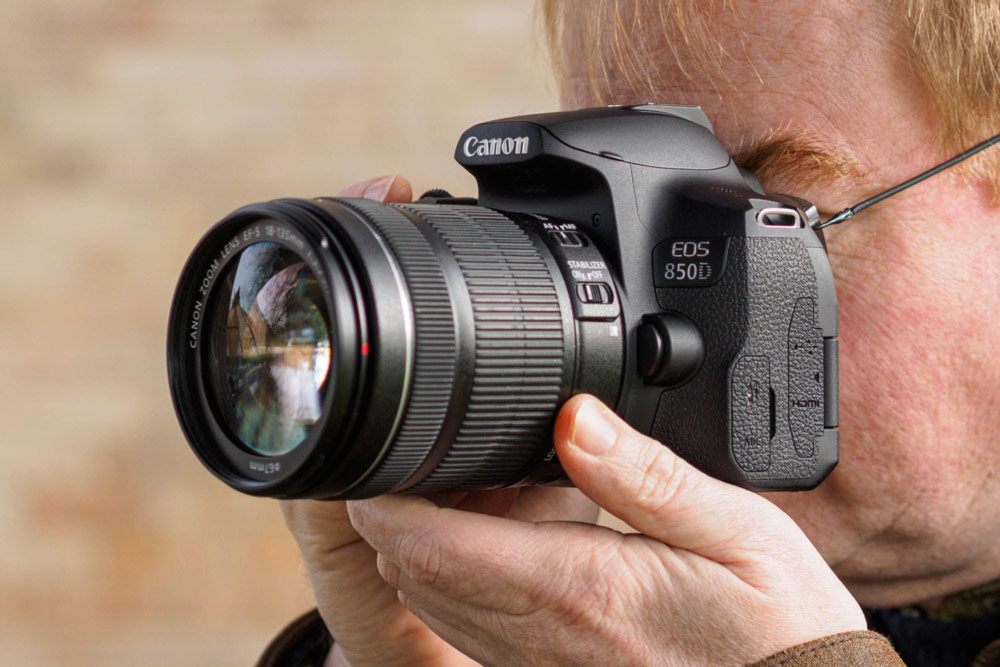How to Use a Canon DSLR Camera: Expert Tips for Professional Photographers
The art of photography is ever-evolving, and mastering your Canon DSLR camera is crucial for professional photographers. Whether you're shooting a wedding, capturing nature, or creating studio portraits, understanding how to use a Canon DSLR camera effectively can elevate your work to new heights.

Getting Started with Your Canon DSLR Camera
Understanding the Basics
Before diving into the intricate settings, it's essential to familiarize yourself with the camera's physical components. Canon DSLRs are renowned for their ergonomic design, which professionals find highly intuitive.
First, lets talk about ports and buttons. Make sure you know where the following are located: the Shutter Button, Mode Dial, LCD Screen, Viewfinder, and the various ports for HDMI, USB, and memory cards. Getting acquainted with these basics will ease your workflow.
Setting Up for the First Time
Upon unboxing your Canon DSLR, charge your batteries fully. Inserting a freshly charged battery and a pre-formatted memory card ensures that you're ready to shoot without interruptions. For an in-depth guide on the setup process, visit this informative article.
:max_bytes(150000):strip_icc()/DSLR-camera-56e0b8ee5f9b5854a9f865ca.jpg)
Navigating the Menu System
Customizing Your Settings
The menu system of a Canon DSLR camera is your gateway to customization. Professional photographers understand the importance of tweaking settings like ISO, White Balance, and Autofocus modes to suit different shooting conditions.
Use the Q (Quick Control) Button for easy access to essential settings. You can save your frequently used configurations to one of the Custom Shooting Modes (C1, C2, etc.) for quick access. For more on configuring your Canon DSLR for various conditions, check out this detailed guide.
Mastering the Autofocus System
The autofocus system on Canon DSLRs is sophisticated. Youll find it particularly useful in fast-paced photography environments such as sports and wildlife photography. Enabling AI Servo AF mode allows continuous autofocus on moving subjects.
To further improve your focus skills, review this guide on focus troubleshooting.

Advanced Shooting Techniques
Manual Mode Mastery
Manual Mode (M) gives you complete control over your camera settings. Professional photographers often prefer this mode for its flexibility. Balancing the triangle of ISO, Shutter Speed, and Aperture opens up creative possibilities. Adjust these settings based on your shooting environment.
Utilizing Bracketing and HDR
Bracketing allows you to take multiple shots at different exposure levels, which can be merged into an HDR (High Dynamic Range) image. This technique is especially useful in high-contrast scenes. Setting up AEB (Auto Exposure Bracketing) is straightforward and can be a game-changer in landscape photography.

Post-Processing Tips
RAW vs. JPEG
Shooting in RAW format provides more flexibility during post-processing. Although RAW files are larger, they retain more detail, allowing for extensive edits without compromising quality. JPEGs are compressed, making them easier to share but less versatile in editing.
Explore more on the benefits of RAW in this introductory guide to DSLR photography.
Utilizing Adobe Lightroom
Professional photographers often rely on Adobe Lightroom for editing. Its interface is user-friendly, and the software offers powerful tools for color correction, exposure adjustments, and batch processing. For getting started with Lightroom, visit this helpful resource.
FAQs
What is the best lens for a Canon DSLR?
The best lens depends on your niche. For portraits, a 50mm f/1.8 is a good start. For landscapes, try a wide-angle lens like the 16-35mm.
How do I clean my Canon DSLR?
Use a blower to remove dust from the sensor and lens. Avoid touching the sensor directly. Specific cleaning kits designed for DSLRs are recommended.
Can I use my Canon DSLR for video recording?
Absolutely! Many Canon DSLR models offer 4K video recording. Use an external microphone for better audio quality.
For additional resources, you can refer to this guide for DSLR beginners.
As an Amazon Associate, I earn from qualifying purchases.

